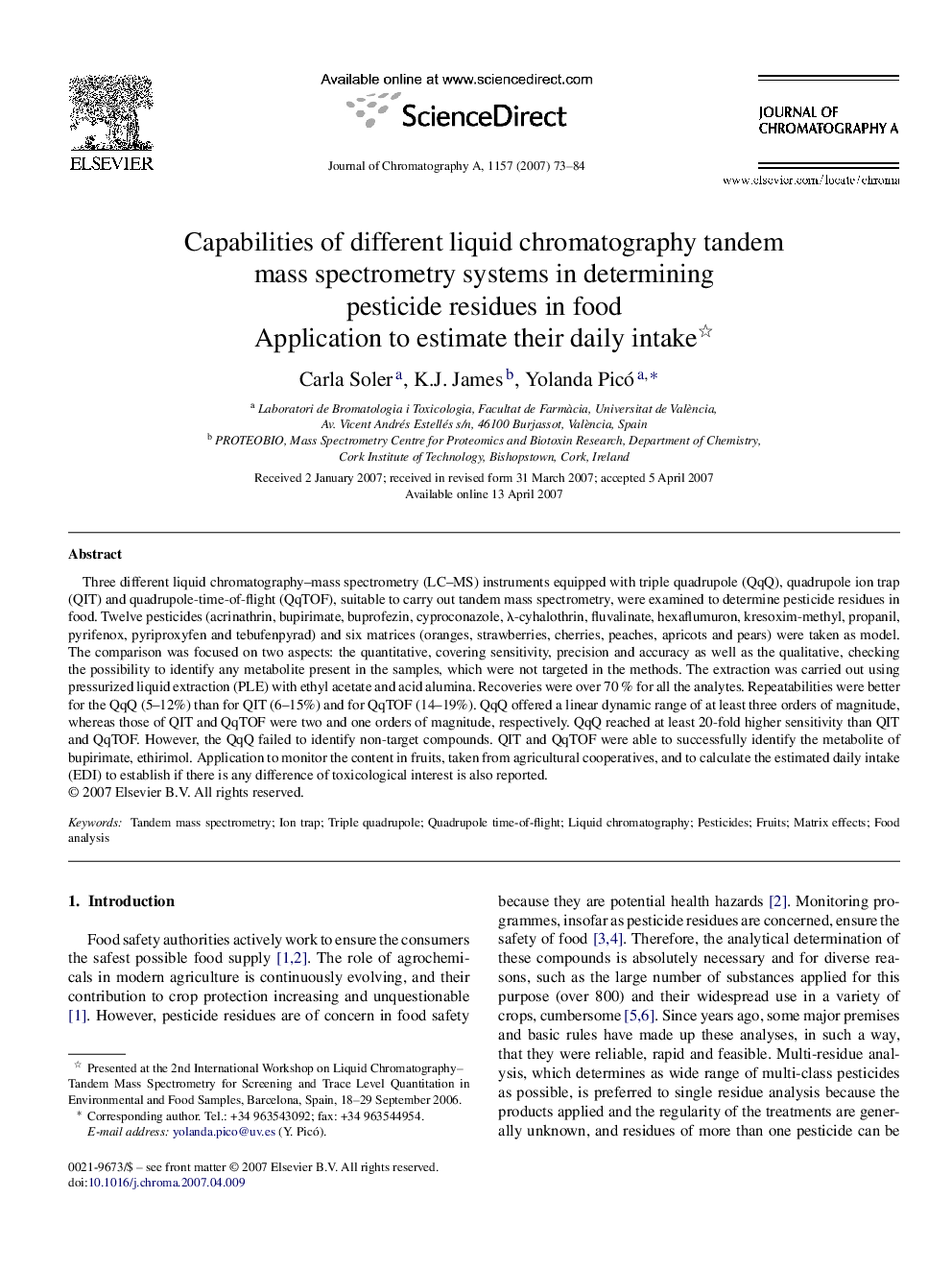| Article ID | Journal | Published Year | Pages | File Type |
|---|---|---|---|---|
| 1207014 | Journal of Chromatography A | 2007 | 12 Pages |
Three different liquid chromatography–mass spectrometry (LC–MS) instruments equipped with triple quadrupole (QqQ), quadrupole ion trap (QIT) and quadrupole-time-of-flight (QqTOF), suitable to carry out tandem mass spectrometry, were examined to determine pesticide residues in food. Twelve pesticides (acrinathrin, bupirimate, buprofezin, cyproconazole, λ-cyhalothrin, fluvalinate, hexaflumuron, kresoxim-methyl, propanil, pyrifenox, pyriproxyfen and tebufenpyrad) and six matrices (oranges, strawberries, cherries, peaches, apricots and pears) were taken as model. The comparison was focused on two aspects: the quantitative, covering sensitivity, precision and accuracy as well as the qualitative, checking the possibility to identify any metabolite present in the samples, which were not targeted in the methods. The extraction was carried out using pressurized liquid extraction (PLE) with ethyl acetate and acid alumina. Recoveries were over 70 % for all the analytes. Repeatabilities were better for the QqQ (5–12%) than for QIT (6–15%) and for QqTOF (14–19%). QqQ offered a linear dynamic range of at least three orders of magnitude, whereas those of QIT and QqTOF were two and one orders of magnitude, respectively. QqQ reached at least 20-fold higher sensitivity than QIT and QqTOF. However, the QqQ failed to identify non-target compounds. QIT and QqTOF were able to successfully identify the metabolite of bupirimate, ethirimol. Application to monitor the content in fruits, taken from agricultural cooperatives, and to calculate the estimated daily intake (EDI) to establish if there is any difference of toxicological interest is also reported.
